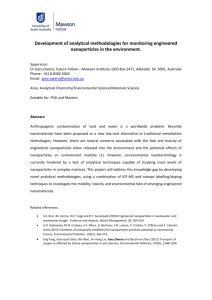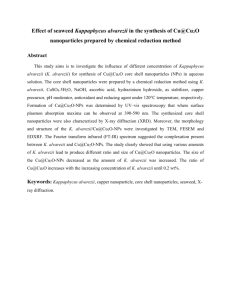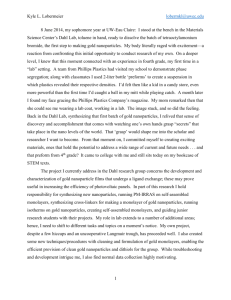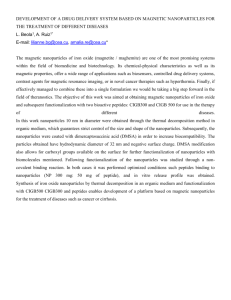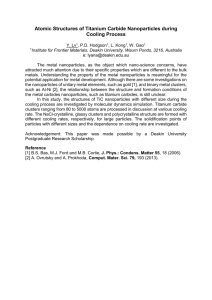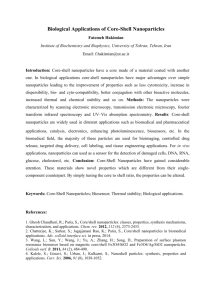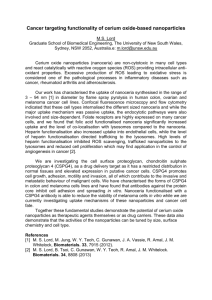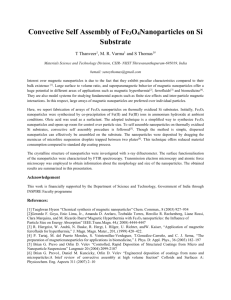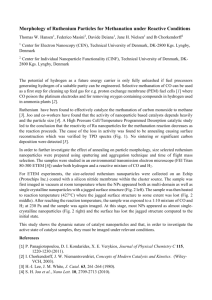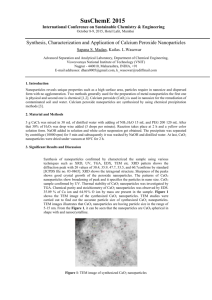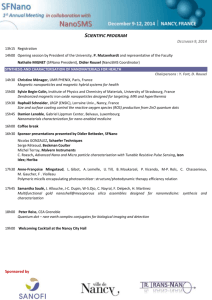Atom probe tomography of nanoparticles
advertisement
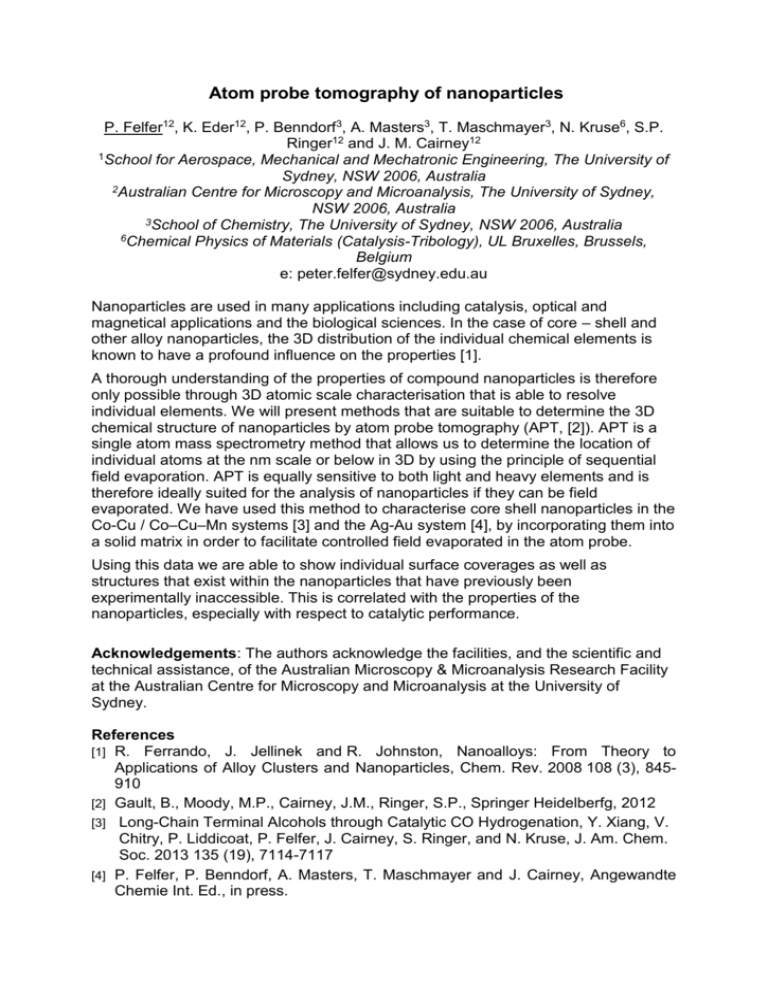
Atom probe tomography of nanoparticles P. Felfer12, K. Eder12, P. Benndorf3, A. Masters3, T. Maschmayer3, N. Kruse6, S.P. Ringer12 and J. M. Cairney12 1School for Aerospace, Mechanical and Mechatronic Engineering, The University of Sydney, NSW 2006, Australia 2Australian Centre for Microscopy and Microanalysis, The University of Sydney, NSW 2006, Australia 3School of Chemistry, The University of Sydney, NSW 2006, Australia 6Chemical Physics of Materials (Catalysis-Tribology), UL Bruxelles, Brussels, Belgium e: peter.felfer@sydney.edu.au Nanoparticles are used in many applications including catalysis, optical and magnetical applications and the biological sciences. In the case of core – shell and other alloy nanoparticles, the 3D distribution of the individual chemical elements is known to have a profound influence on the properties [1]. A thorough understanding of the properties of compound nanoparticles is therefore only possible through 3D atomic scale characterisation that is able to resolve individual elements. We will present methods that are suitable to determine the 3D chemical structure of nanoparticles by atom probe tomography (APT, [2]). APT is a single atom mass spectrometry method that allows us to determine the location of individual atoms at the nm scale or below in 3D by using the principle of sequential field evaporation. APT is equally sensitive to both light and heavy elements and is therefore ideally suited for the analysis of nanoparticles if they can be field evaporated. We have used this method to characterise core shell nanoparticles in the Co-Cu / Co–Cu–Mn systems [3] and the Ag-Au system [4], by incorporating them into a solid matrix in order to facilitate controlled field evaporated in the atom probe. Using this data we are able to show individual surface coverages as well as structures that exist within the nanoparticles that have previously been experimentally inaccessible. This is correlated with the properties of the nanoparticles, especially with respect to catalytic performance. Acknowledgements: The authors acknowledge the facilities, and the scientific and technical assistance, of the Australian Microscopy & Microanalysis Research Facility at the Australian Centre for Microscopy and Microanalysis at the University of Sydney. References [1] R. Ferrando, J. Jellinek and R. Johnston, Nanoalloys: From Theory to Applications of Alloy Clusters and Nanoparticles, Chem. Rev. 2008 108 (3), 845910 [2] Gault, B., Moody, M.P., Cairney, J.M., Ringer, S.P., Springer Heidelberfg, 2012 [3] Long-Chain Terminal Alcohols through Catalytic CO Hydrogenation, Y. Xiang, V. Chitry, P. Liddicoat, P. Felfer, J. Cairney, S. Ringer, and N. Kruse, J. Am. Chem. Soc. 2013 135 (19), 7114-7117 [4] P. Felfer, P. Benndorf, A. Masters, T. Maschmayer and J. Cairney, Angewandte Chemie Int. Ed., in press.





